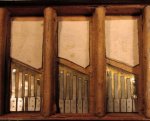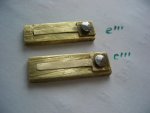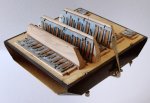Higher-end Russian bayans and garmons still use multi-reed plates where many reeds are attached to a large plate.
When did European-made accordions stop using those? And when did they start using single reed plates?
My assumption is that these multi-reed plates were the original way of building accordions.
Here is an example of a very old, supposedly German-made, Geraldo PA using multi-reed plates:
<ATTACHMENT filename=Multi-reed.jpg index=0>
Are there other modern, non-Russian, non-bayan-style accordions that still use these multi-reed plates?
Here is a blog post that touches on this topic: http://gumshoearcana.blogspot.co.za/2011/07/in-old-days-accordion-builders-riveted.html
When did European-made accordions stop using those? And when did they start using single reed plates?
My assumption is that these multi-reed plates were the original way of building accordions.
Here is an example of a very old, supposedly German-made, Geraldo PA using multi-reed plates:
<ATTACHMENT filename=Multi-reed.jpg index=0>
Are there other modern, non-Russian, non-bayan-style accordions that still use these multi-reed plates?
Here is a blog post that touches on this topic: http://gumshoearcana.blogspot.co.za/2011/07/in-old-days-accordion-builders-riveted.html







